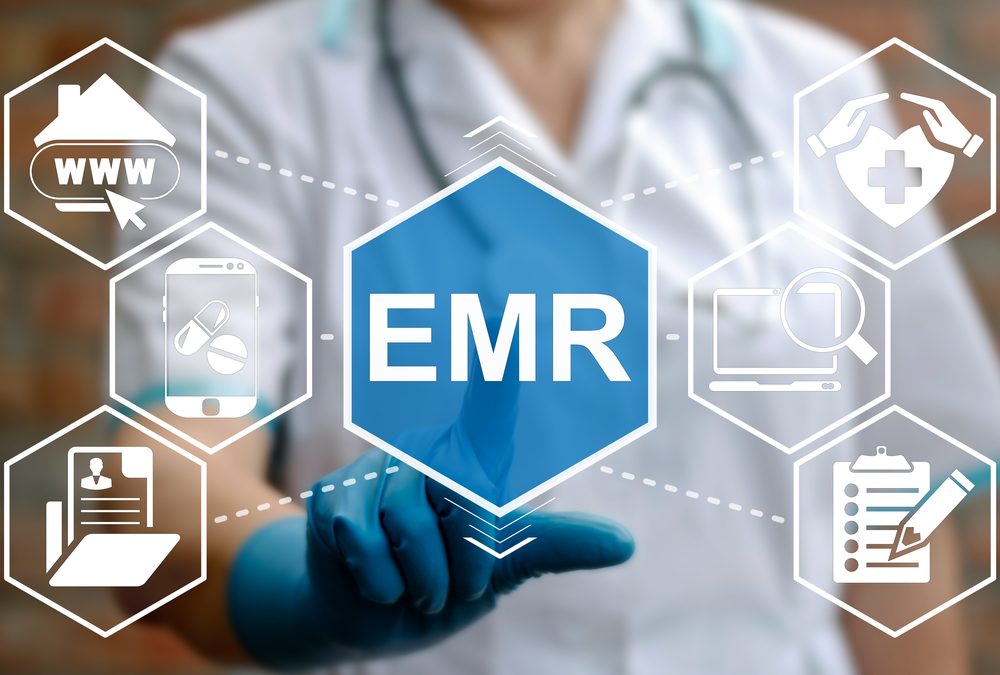Ensuring a Successful EMR Implementation
An Electronic Health Record (EHR) is a digital version of a patient’s official health record. As healthcare becomes digitized, implementing an Electronic Health Record system is becoming a common practice throughout the medical community. According to The National Law Review, over 80% of US hospitals used some type of EHR in 2014 and over the last couple of years, this percentage has definitely increased not only in the US but also in other countries.
An EHR makes information available instantly and securely to authorized users but it needs to be compliant with the guidelines set by HIPAA to ensure that the patient’s security is protected. But before implementing an EHR system, a thorough study needs to be conducted to ensure its feasibility and cost effectiveness. This blog discusses some of the factors that are essential for successful implementation of an EHR system.
Define business goals and align with them
The first step in any EHR implementation is to understand and define the organization’s business goals, financial and technical readiness. These goals could be related to clinical revenue goals, or work environment ranging from automating workflows to providing patient communication online. Other factors which also need to be taken into account include software and hardware requirements, training methods post implementation, distribution of labor and responsibilities, integrations with billing systems, and connecting seamlessly with laboratories and other providers. Once these goals are defined and documented, it becomes easier to formulate a plan and calculate the time needed and costs to be incurred. These goals may need to be re-assessed throughout the EHR implementation to ensure a smooth transition for the practice and all staff.
Get approval from relevant stakeholders
It is important to get the EHR project goals thoroughly reviewed by stakeholders so that any major pitfalls can be easily avoided. Medical practice is much more than only patient care. The stakeholders can help analyze the practice needs while ensuring that all the legal and ethical guidelines are fulfilled.
The stakeholder’s panel should include clinicians, office staff, billing team, finance and operations personnel, and marketing staff who are involved at every level in the implementation process.
Use the right technology and infrastructure
Choosing the right technology and infrastructure for the EHR depends on the goals that you have selected for the EHR. Ensure that the EHR vendor can offer the expertise and support needed to make the EHR stand out of the competition.
Most of the EHR vendors offer to host the EHR systems on the cloud, which turns out to be cheaper as the costs of IT maintenance and technical support are outsourced to the vendor.
Implement strong processes
It is vital to have strong processes in place so that you are protected against potential problems that might spring up during the implementation. Some of these could be as follows:
- Identify your software and hardware needs. Connect with your IT vendor to configure security, customize workflows, and optimize costs.
- Prepare a checklist of all the types of data that you want to migrate from previous data systems into the EHR. This ensures that all important information is transferred to the EHR.
- Determine strategies for periods when the EHR may be down due to power outages or system malfunctions so that clinicians and staff know how to handle such situations.
Offer the right training
The final and important step is to train the staff to use the new system as efficiently as possible. The training could be instructor-led or self-paced and will vary based on the roles of the staff. But importantly, the training should be conducted within a couple of weeks of implementing the EHR system. Ongoing training should also be planned for the future to update the staff with new features and EHR upgrades.
How does HATI International Tech ensure successful EHR implementation?
At HATI International Tech, we use BREEDS Methodology to ensure that the EHR implementations are successful. We have helped several multi-specialty hospital chains and specialty clinics with technology implementations. Here is how we ensure the success –
BREEDS is an acronym that stands for the following:
- Business Driven– We work with our customers to identify the top five business goals that are further divided into Leadership goals and Quality goals and top five risks associated with budgets and clinical adoption. These goals became the drivers of the project.
- Rapid– The next step is rapid development of pilots. We develop pilots for rapidly integrating our Patient Administrative System, Clinical Information System, and Business Analytics workflows into the EHR system.
- Efficient– We identify the top gaps in the core processes, such as Admin and clinical processes, and based on that, define methods to bridge those gaps and make those processes more efficient. We understand that the top goal of the hospitals is to increase the efficiency.
- Empirical– Our technology implementations include development of strategies for integrating Empirical Clinical Content, such as Clinical Templates, Output data (Discharge summaries, prescriptions) and order sets into the EHR system.
- Dynamic– We use Agile methodology for improved collaboration between development and operations teams to implement the EHR incrementally in phases while learning and correcting the process along the way. This helps us in being adaptable to changing business needs and help us tweak the implementations based on those.
- Sustainable– Our work does not get over after the implementation. We have an automated platform which provides 24×7 support for submitting and handling EHR issues.
As we see, this methodology involves collaboration between business goals, processes and practices, systems and people to optimize project results, reduce wastage, and maximize efficiency right from early design phase right till the end of the implementation.
Implementing the right EHR system is vital for any practice to streamline clinical workflows, earn financial incentives, and improve overall patient care. A good EHR system once implemented successfully will reap rewards for many years to come.




